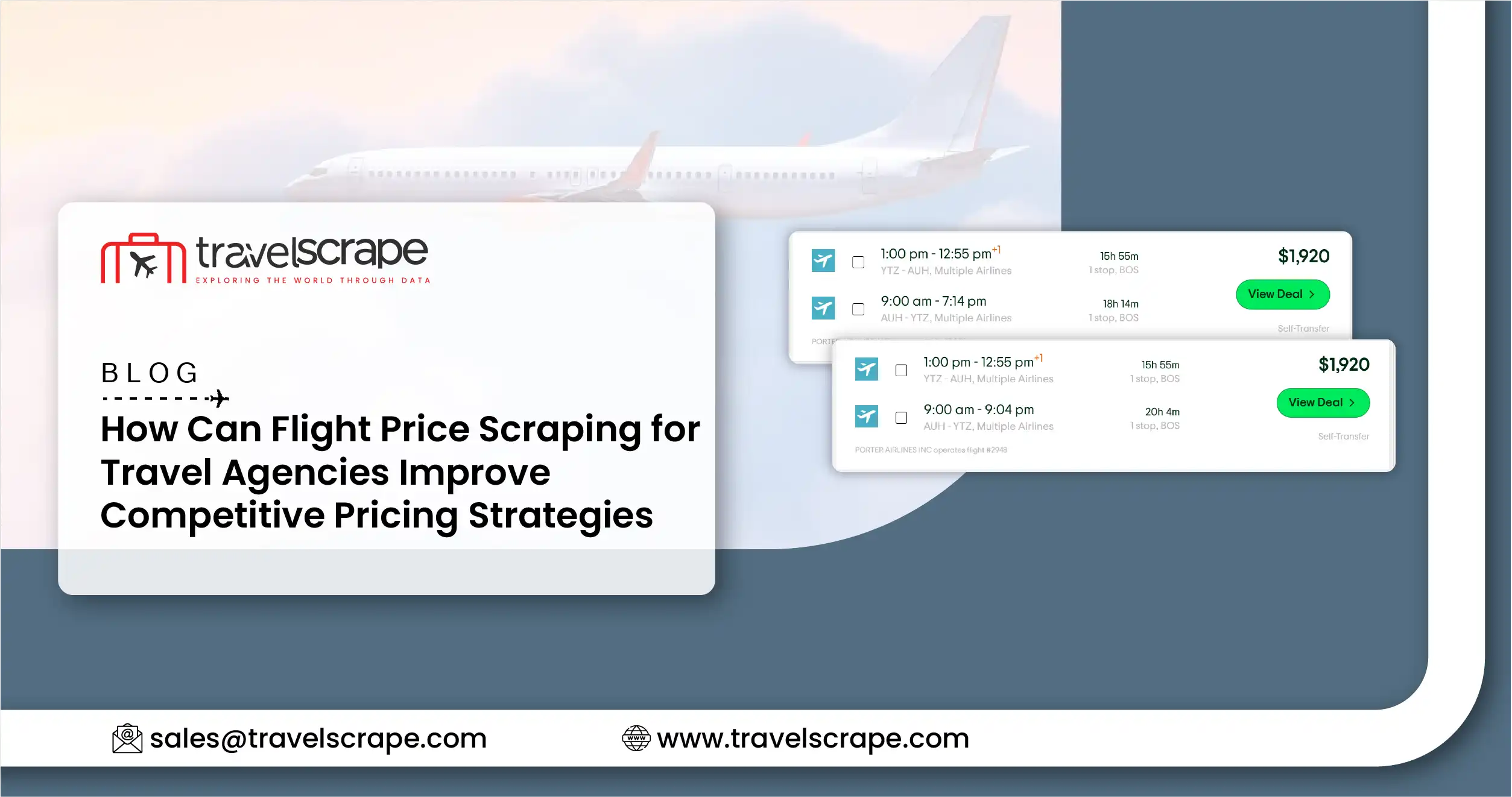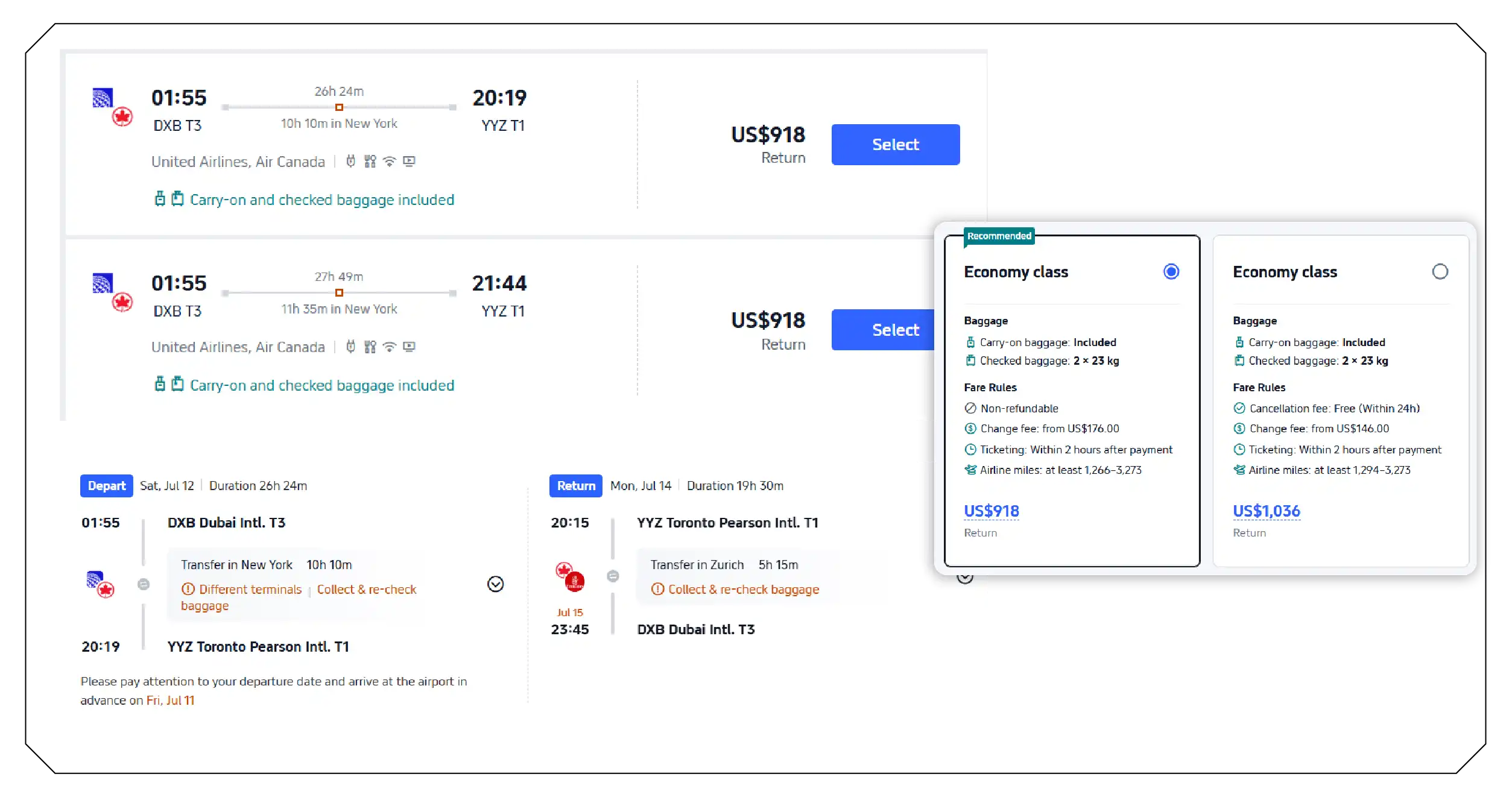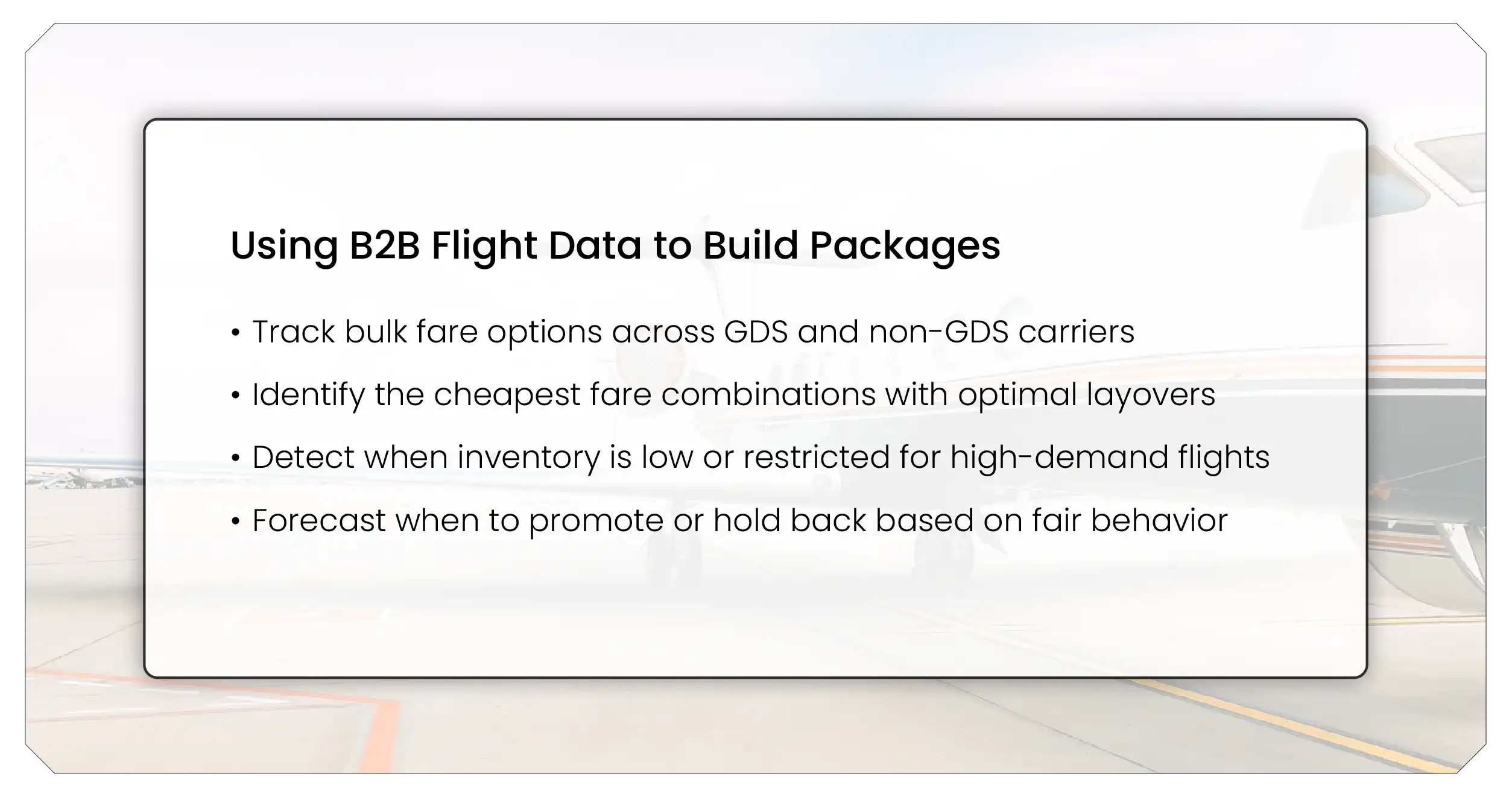How Can Flight Price Scraping for Travel Agencies Improve Competitive Pricing Strategies?

Introduction
In the rapidly evolving travel sector, flight price scraping for travel agencies has become a crucial strategy for gaining real-time pricing visibility, optimizing offers, and maintaining competitiveness. With airfare volatility driven by fuel prices, geopolitical shifts, airline demand, and seasonal surges, no agency can afford to guess the right price anymore.
To meet this challenge, many agencies now rely on travel agency data tools that can automatically fetch, organize, and analyze flight prices from multiple sources. From mainstream OTAs to niche booking platforms, the ability to track fare changes in real time opens the door to smarter decisions, more competitive offerings, and better margins.
For those looking to scrape flight prices 2025, automation and adaptability are key. The traditional manual price-checking method has long been outdated—today's travel agencies need agile systems that can deliver up-to-the-minute fare data in bulk, without human effort.
This demand has led to the rise of dynamic airfare scraping—a technique that extracts pricing data across airlines, routes, dates, and classes. Agencies that adopt this approach can develop more effective packages, provide faster quotes, and significantly enhance customer satisfaction.
Rising Trends of Flight Price Scraping in the Travel Industry

As air travel rebounds in 2025, competition among agencies, consolidators, and OTAs is fiercer than ever. With consumers comparing dozens of sites before booking, agencies can't afford to offer outdated fares. This is why travel pricing automation has moved from a luxury to a necessity.
Some rising trends driving this shift include:
- Hyper-personalized flight bundles: Agencies utilize scraped fare data to create dynamic bundles that include layovers, seat types, and cabin class upgrades.
- Region-based pricing strategies: Pricing varies by geography; agencies can now segment based on IP and scrape accordingly.
- Fare alerts and predictive pricing tools: Consumers demand fare transparency, and agencies offering predictive tools gain more loyalty.
In parallel, airline data extraction helps agencies understand pricing strategies from both full-service and low-cost carriers, enabling optimized pricing without overreliance on GDS.
Types of Insights Gained from Flight Price Scraping
Scraping airfare data provides more than just prices; it also offers insights into the market. It unveils critical market intelligence that agencies can act on instantly. Some insights include:
- Price trends over time: Identify how prices fluctuate based on day of week, lead time before departure, or seasonality.
- Competitor fare monitoring: See how similar travel products are priced across other OTAs and agencies.
- Carrier-specific behavior: Understand which airlines are aggressively discounting or launching flash sales.
- Class-based price behavior: Monitor how prices change between economy, premium economy, and business class.
Advanced Airlines Data Scraping systems even extract hidden costs like baggage fees, seat upgrades, and cancellation policies—helping agencies offer more accurate price comparisons.
This kind of Flight Price Data Intelligence transforms raw numbers into strategic advantages.
How Travel Agencies Leverage Flight Price Scraping?

Modern travel agencies are no longer dependent solely on traditional distribution systems. Instead, they leverage scraped data to control the customer experience and margins.
Here's how it works:
- Dynamic quoting: With Real-Time Flight Price Monitoring, agencies can offer quotes that match or undercut competitor rates.
- Fare mapping: Match specific client profiles with the best flight options by filtering based on time, stopovers, airlines, and more.
- Customized white-label portals: Use scraped data to build branded platforms with real-time search capabilities.
- Profit Optimization: Monitor markups applied by OTAs and set your competitive margins for specific routes.
Scraped data helps identify Airline Fares that are temporarily lower than average, allowing agencies to push time-sensitive deals.
How the Scraped Data Is Implemented?
Once scraped, flight pricing data can be integrated into the agency's internal tools or client-facing systems.
Typical implementation strategies include:
- APIs: Using a scalable Travel Scraping API to feed real-time fare data into booking engines.
- Dashboards: Visualize trends and price deltas for internal strategy planning.
- CRM Integration: Combine price history with client profiles to suggest best-value options.
- Alerts & Automation: Automatically trigger alerts when fares drop below a set threshold.
Many use Travel Aggregators Scraping to monitor how large platforms like Skyscanner, Expedia, or Google Flights update and display pricing, helping travel agencies adapt their display logic and promotional tactics.
Using B2B Flight Data to Build Packages

Scraped B2B flight data helps tour operators and travel agents build competitive, bundled travel experiences. For instance:
- Track bulk fare options across GDS and non-GDS carriers
- Identify the cheapest fare combinations with optimal layovers
- Detect when inventory is low or restricted for high-demand flights
- Forecast when to promote or hold back based on fair behavior
This data also contributes to real-time travel pricing, which is critical for flash promotions and limited-time booking windows. It's all about making the offer at the right price, at the right time, to the right user.
How to Stay Competitive with Scraped Flight Price Data?
In a saturated market, scraped flight data helps you:
- Match or beat OTA pricing: Utilize the flight API for agencies to fetch live prices and dynamically display them during customer interactions, thereby reducing drop-offs caused by price mismatches.
- Launch time-sensitive offers: When fare drops are detected, run instant promotions to your email subscribers or app users.
- Segment pricing by traveler persona: Business travelers, budget tourists, and premium customers each respond to different pricing strategies. Scraped data allows you to tailor offerings accordingly.
- Optimize paid ads: Utilize price intelligence for travel resellers to optimize Google Ads and Meta campaigns by structuring them around the best-value destinations and routes.
- Uncover OTA strategies: You can scrape OTA fares to see how much markup your competitors apply and adjust your own pricing or value proposition to stay competitive.
Travel Technology Scraping: The Backbone of Smart Travel Marketing
Travel technology scraping refers to a broader system that encompasses more than just fares. Agencies also scrape airport traffic data, flight delays, booking engine UIs, and even airline review content.
Here's what it supports:
- Smarter UX design based on what top OTAs are doing
- Better route planning based on real-time travel conditions
- Dynamic content generation for travel blogs and SEO
- Predictive analytics based on past flight behavior
As AI becomes integrated into scraping tools, agencies are leveraging data more effectively without manual effort or reliance on static databases.
How Travel Scrape Can Help You?
- Real-Time Flight and Hotel Price Monitoring: We deliver up-to-the-minute data from airlines and OTAs, helping you stay competitive with accurate, dynamic pricing.
- Competitor Intelligence Across Travel Platforms: Track how competitors price packages, flights, or accommodations by scraping travel aggregators and marketplaces globally.
- Search Volume and Destination Trend Analysis: Understand what travelers are looking for by scraping keywords and trends to inform your SEO and content strategy.
- Customized Data Dashboards for Actionable Insights: Visualize scraped data in interactive dashboards to spot patterns, compare fare classes, and monitor seasonal demand shifts.
- Boost Your Sales with Data-Driven Recommendations: Utilize our scraping output to refine your marketing campaigns, pricing, and bundling strategies for enhanced conversions and customer satisfaction.
Conclusion
As travel becomes more dynamic, personalized, and competitive, agencies must move quickly to win over price-sensitive consumers. This makes scraping not just a technical option, but a strategic imperative.
With tools powered by AI for fare tracking, agencies can automate pricing insights, detect emerging fare patterns, and proactively respond to market changes. The ability to extract flight ticket metadata, such as fare class, change fees, and baggage rules, ensures that no value is missed in comparison.
An effective airfare monitoring system not only enhances customer experience but also boosts profit margins, campaign success rates, and operational agility.
Flight price scraping for travel agencies is no longer a secret weapon—it's the new standard in intelligent travel marketing.

